

النبات

مواضيع عامة في علم النبات

الجذور - السيقان - الأوراق

النباتات الوعائية واللاوعائية

البذور (مغطاة البذور - عاريات البذور)

الطحالب

النباتات الطبية


الحيوان

مواضيع عامة في علم الحيوان

علم التشريح

التنوع الإحيائي

البايلوجيا الخلوية


الأحياء المجهرية

البكتيريا

الفطريات

الطفيليات

الفايروسات


علم الأمراض

الاورام

الامراض الوراثية

الامراض المناعية

الامراض المدارية

اضطرابات الدورة الدموية

مواضيع عامة في علم الامراض

الحشرات


التقانة الإحيائية

مواضيع عامة في التقانة الإحيائية


التقنية الحيوية المكروبية

التقنية الحيوية والميكروبات

الفعاليات الحيوية

وراثة الاحياء المجهرية

تصنيف الاحياء المجهرية

الاحياء المجهرية في الطبيعة

أيض الاجهاد

التقنية الحيوية والبيئة

التقنية الحيوية والطب

التقنية الحيوية والزراعة

التقنية الحيوية والصناعة

التقنية الحيوية والطاقة

البحار والطحالب الصغيرة

عزل البروتين

هندسة الجينات


التقنية الحياتية النانوية

مفاهيم التقنية الحيوية النانوية

التراكيب النانوية والمجاهر المستخدمة في رؤيتها

تصنيع وتخليق المواد النانوية

تطبيقات التقنية النانوية والحيوية النانوية

الرقائق والمتحسسات الحيوية

المصفوفات المجهرية وحاسوب الدنا

اللقاحات

البيئة والتلوث


علم الأجنة

اعضاء التكاثر وتشكل الاعراس

الاخصاب

التشطر

العصيبة وتشكل الجسيدات

تشكل اللواحق الجنينية

تكون المعيدة وظهور الطبقات الجنينية

مقدمة لعلم الاجنة


الأحياء الجزيئي

مواضيع عامة في الاحياء الجزيئي


علم وظائف الأعضاء


الغدد

مواضيع عامة في الغدد

الغدد الصم و هرموناتها

الجسم تحت السريري

الغدة النخامية

الغدة الكظرية

الغدة التناسلية

الغدة الدرقية والجار الدرقية

الغدة البنكرياسية

الغدة الصنوبرية

مواضيع عامة في علم وظائف الاعضاء

الخلية الحيوانية

الجهاز العصبي

أعضاء الحس

الجهاز العضلي

السوائل الجسمية

الجهاز الدوري والليمف

الجهاز التنفسي

الجهاز الهضمي

الجهاز البولي


المضادات الميكروبية

مواضيع عامة في المضادات الميكروبية

مضادات البكتيريا

مضادات الفطريات

مضادات الطفيليات

مضادات الفايروسات

علم الخلية

الوراثة

الأحياء العامة

المناعة

التحليلات المرضية

الكيمياء الحيوية

مواضيع متنوعة أخرى

الانزيمات
Can changes in the structure of chromosomes affect health and development
المؤلف:
Genetics Home Reference
المصدر:
Help Me Understand Genetics
الجزء والصفحة:
13-10-2020
3397
Can changes in the structure of chromosomes affect health and development?
Changes that affect the structure of chromosomes can cause problems with growth, development, and function of the body's systems. These changes can affect many genes along the chromosome and disrupt the proteins made from those genes.
Structural changes can occur during the formation of egg or sperm cells, in early fetal development, or in any cell after birth. Pieces of DNA can be rearranged within one chromosome or transferred between two or more chromosomes. The effects of structural changes depend on their size and location, and whether any genetic material is gained or lost. Some changes cause medical problems, while others may have no effect on a person's health. Changes in chromosome structure include:
Translocations
A translocation occurs when a piece of one chromosome breaks off and attaches to another chromosome. This type of rearrangement is described as balanced if no genetic material is gained or lost in the cell. If there is a gain or loss of genetic material, the translocation is described as unbalanced .
Deletions
Deletions occur when a chromosome breaks and some genetic material is lost. Deletions can be large or small, and can occur anywhere along a chromosome.
Duplications
Duplications occur when part of a chromosome is copied (duplicated) too many times. This type of chromosomal change results in extra copies of genetic material from the duplicated segment.
Inversions
An inversion involves the breakage of a chromosome in two places; the resulting piece of DNA is reversed and re-inserted into the chromosome. Genetic material may or may not be lost as a result of the chromosome breaks. An inversion that involves the chromosome's constriction point (centromere) is called a pericentric inversion. An inversion that occurs in the long (q) arm or short (p) arm and does not involve the centromere is called a paracentric inversion.
Isochromosomes
An isochromosome is a chromosome with two identical arms. Instead of one long (q) arm and one short (p) arm, an isochromosome has two long arms or two short arms. As a result, these abnormal chromosomes have an extra copy of some genes and are missing copies of other genes.
Dicentric chromosomes
Unlike normal chromosomes, which have a single constriction point (centromere), a dicentric chromosome contains two centromeres. Dicentric chromosomes result from the abnormal fusion of two chromosome pieces, each of which includes a centromere. These structures are unstable and often involve a loss of some genetic material.
Ring chromosomes
Ring chromosomes usually occur when a chromosome breaks in two places and the ends of the chromosome arms fuse together to form a circular structure. The ring may or may not include the chromosome's constriction point (centromere). In many cases, genetic material near the ends of the chromosome is lost.
Many cancer cells also have changes in their chromosome structure. These changes are not inherited; they occur in somatic cells (cells other than eggs or sperm) during the formation or progression of a cancerous tumor.
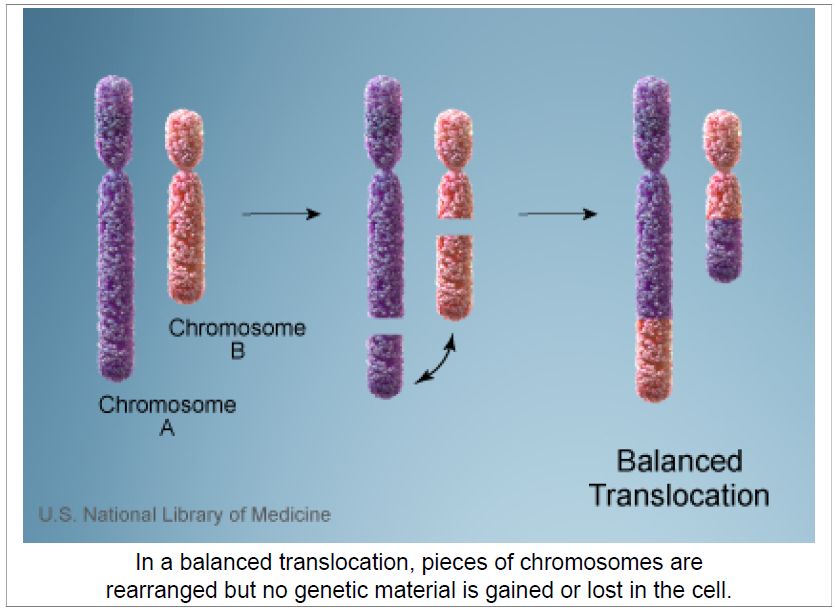
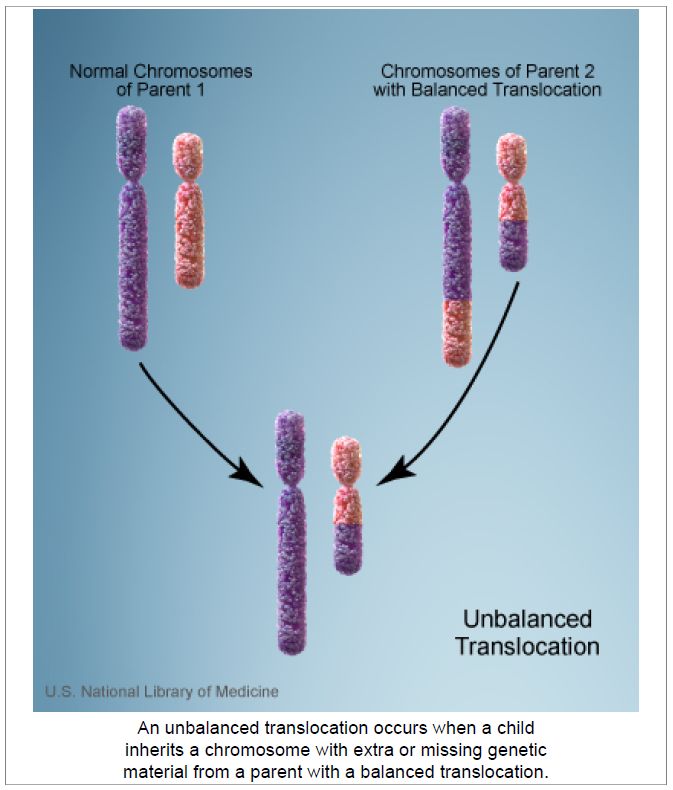
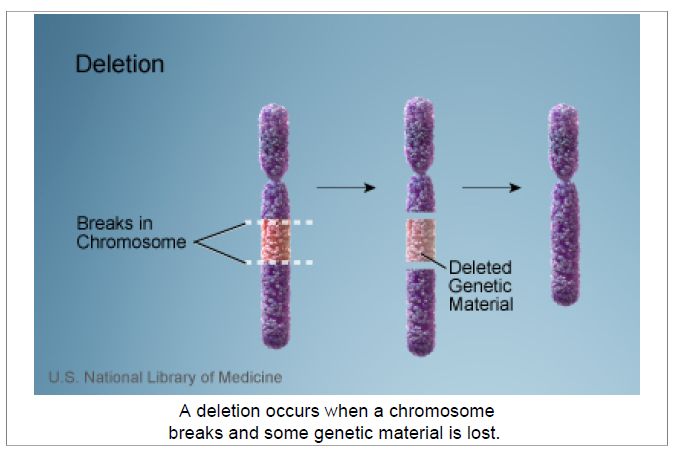
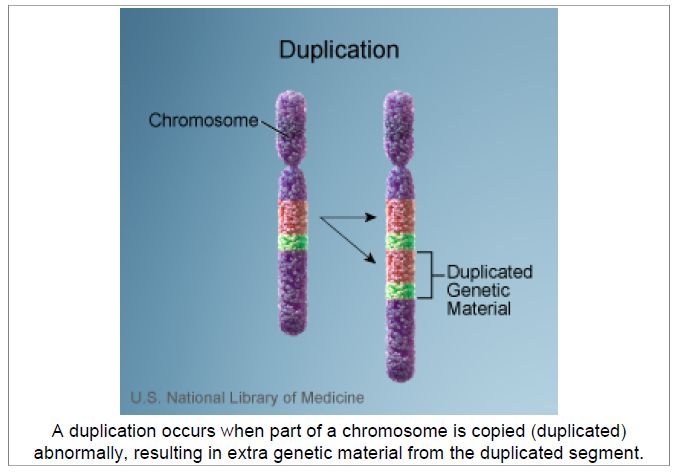
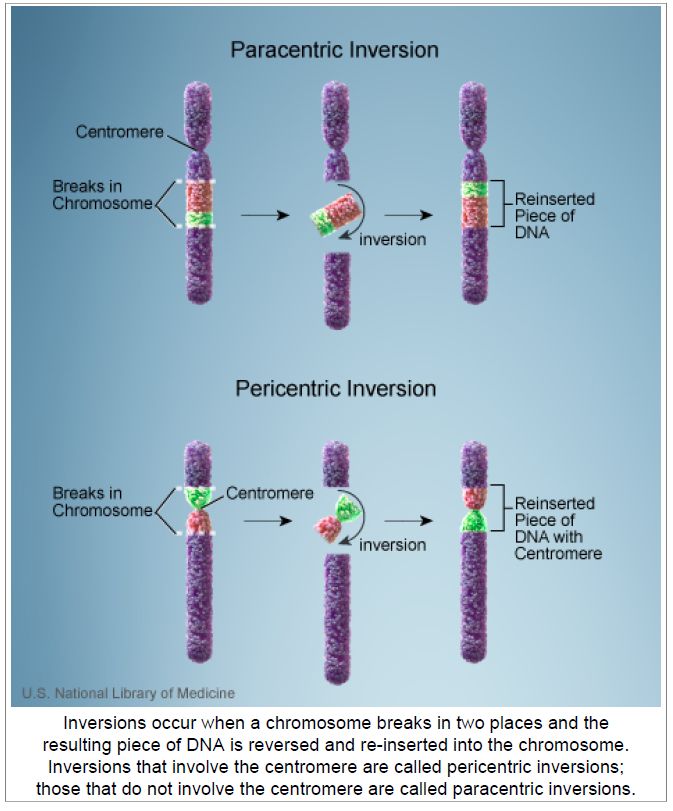
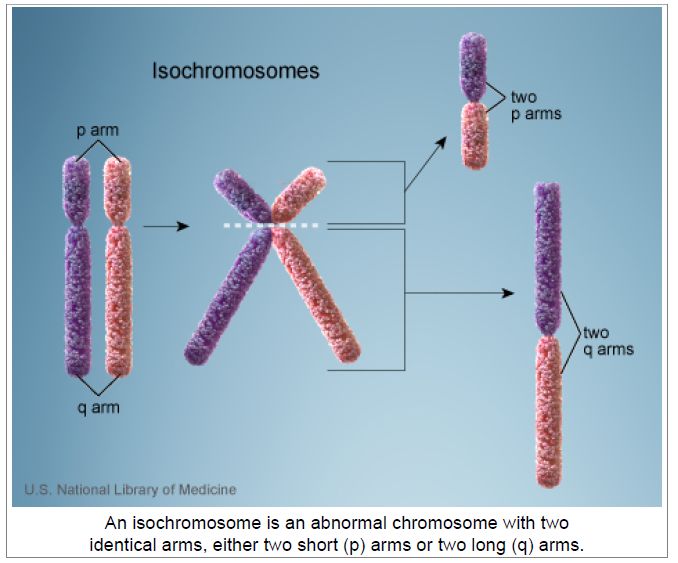
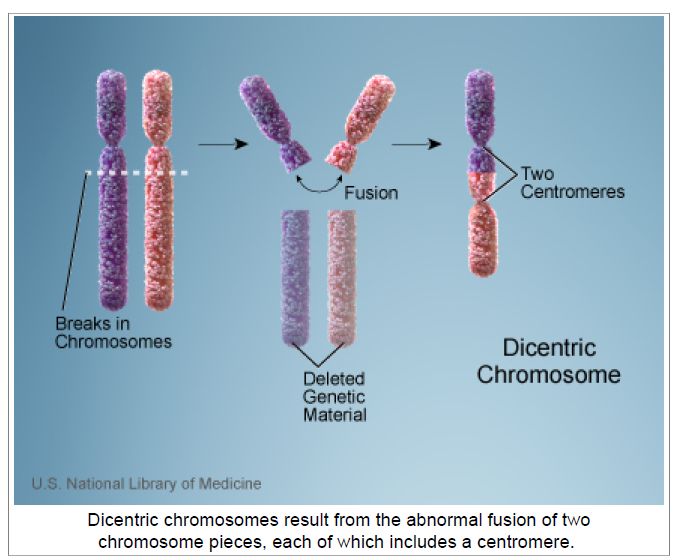
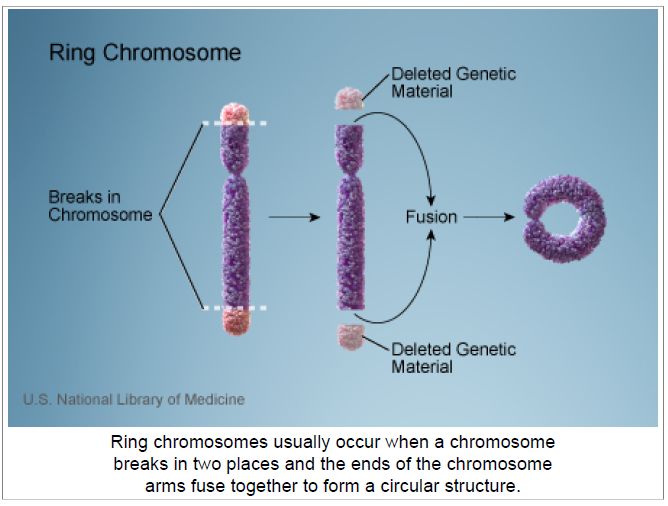
 الاكثر قراءة في مواضيع عامة في الاحياء الجزيئي
الاكثر قراءة في مواضيع عامة في الاحياء الجزيئي
 اخر الاخبار
اخر الاخبار
اخبار العتبة العباسية المقدسة

الآخبار الصحية















 قسم الشؤون الفكرية يصدر كتاباً يوثق تاريخ السدانة في العتبة العباسية المقدسة
قسم الشؤون الفكرية يصدر كتاباً يوثق تاريخ السدانة في العتبة العباسية المقدسة "المهمة".. إصدار قصصي يوثّق القصص الفائزة في مسابقة فتوى الدفاع المقدسة للقصة القصيرة
"المهمة".. إصدار قصصي يوثّق القصص الفائزة في مسابقة فتوى الدفاع المقدسة للقصة القصيرة (نوافذ).. إصدار أدبي يوثق القصص الفائزة في مسابقة الإمام العسكري (عليه السلام)
(نوافذ).. إصدار أدبي يوثق القصص الفائزة في مسابقة الإمام العسكري (عليه السلام)


















